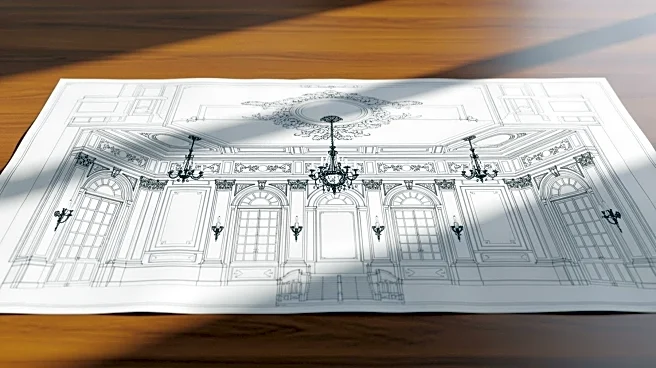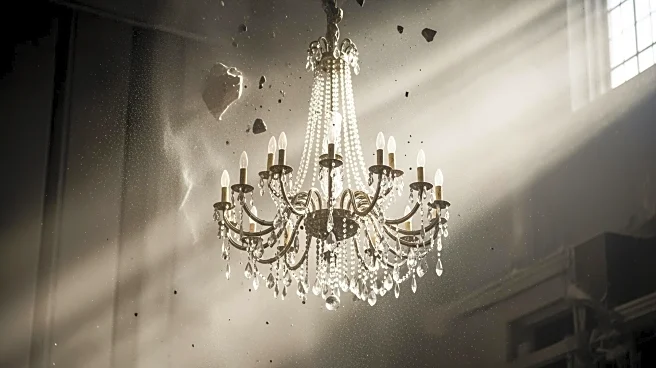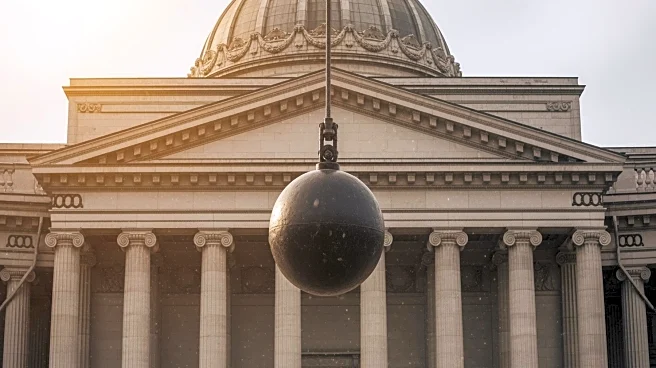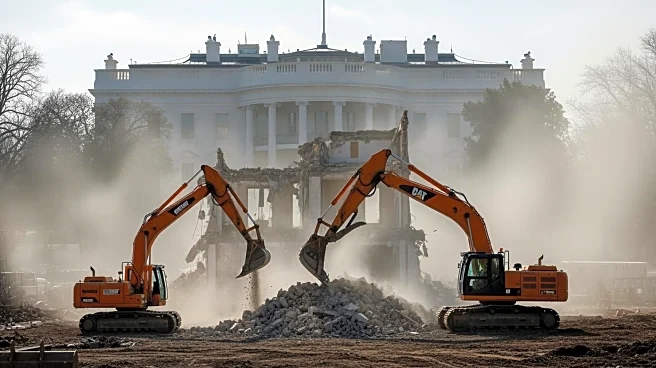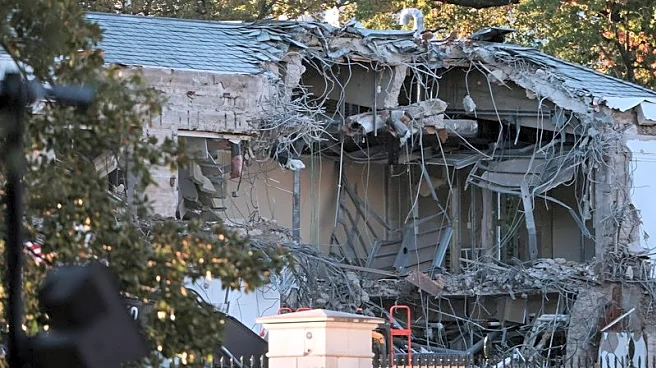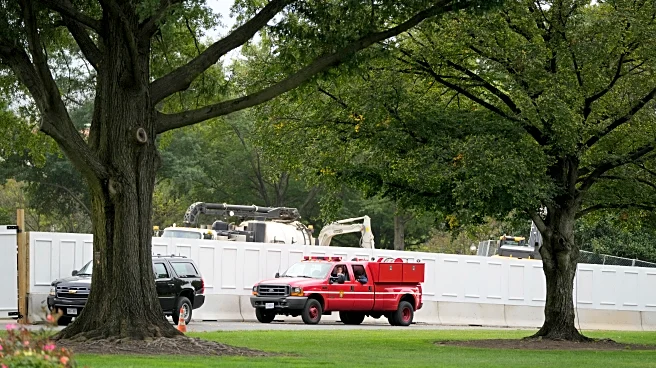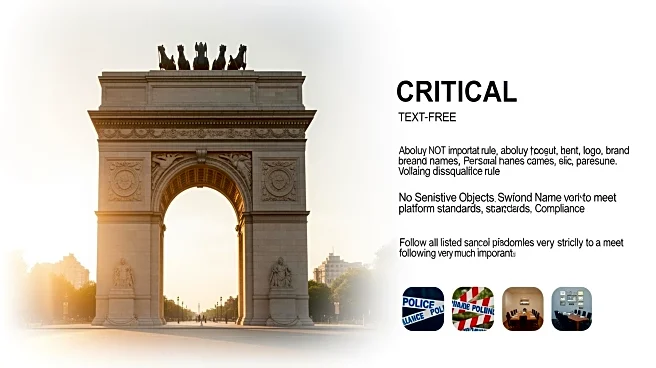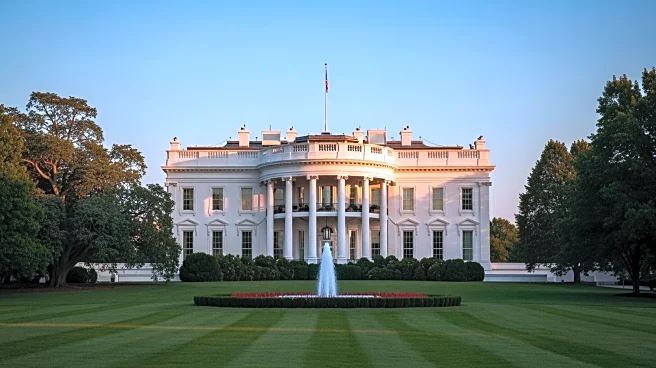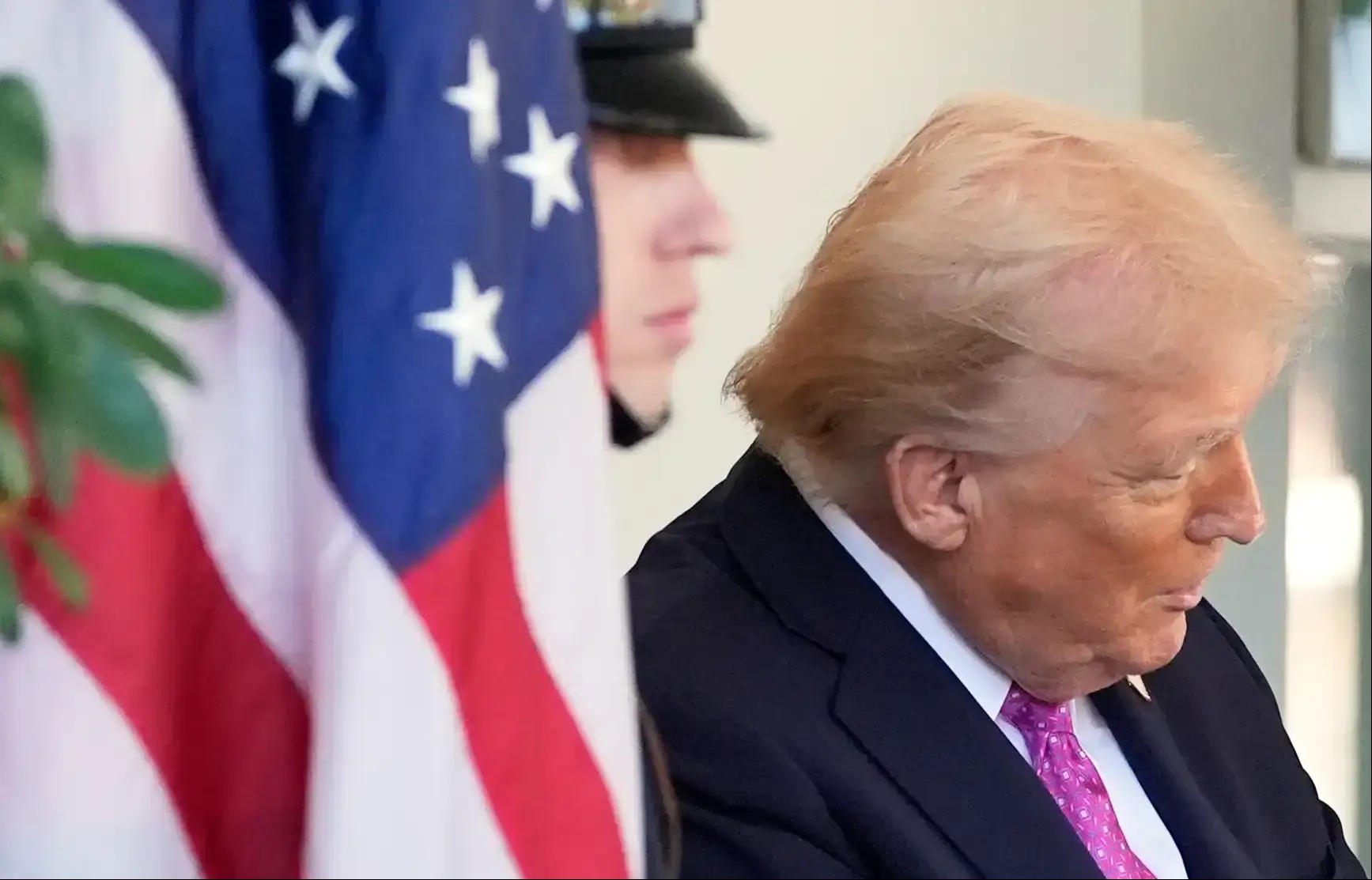What's Happening?
President Trump has commenced a significant renovation project on the East Wing of the White House, which includes the construction of a 90,000-square-foot ballroom. This development marks one of the largest
renovations at the White House in decades. The project, which began with the demolition of part of the East Wing, aims to nearly double the size of the existing structure. The ballroom is expected to accommodate up to 999 people and is part of a broader effort by President Trump to reshape the White House's appearance. The renovation is being financed with contributions from corporate executives, raising concerns among ethics experts about potential access being granted to wealthy donors.
Why It's Important?
The renovation of the White House East Wing is significant as it reflects President Trump's ongoing influence on the physical and cultural landscape of Washington, D.C. The project has sparked ethical concerns due to the involvement of corporate financing, which may suggest a new avenue for wealthy individuals to gain access to the President. This development could have implications for public perceptions of transparency and fairness in government operations. Additionally, the renovation underscores the President's real estate background and his penchant for large-scale construction projects, which may influence future presidential legacies and the historical integrity of the White House.
What's Next?
As the renovation progresses, it is likely to attract further scrutiny from ethics watchdogs and the public. The completion of the ballroom could lead to increased hosting of large-scale events at the White House, potentially altering the nature of presidential engagements. The project may also prompt discussions about the preservation of historical sites and the balance between modernization and maintaining tradition. Stakeholders, including political leaders and civil society groups, may weigh in on the implications of such a significant alteration to a national landmark.
Beyond the Headlines
The renovation of the East Wing raises questions about the role of private funding in public projects, particularly those involving national heritage sites. The involvement of corporate executives in financing the project could set a precedent for future administrations, potentially influencing how public spaces are managed and funded. This development also highlights the cultural and historical significance of the White House, prompting debates about modernization versus preservation. The project may lead to a reevaluation of how presidential legacies are constructed and the impact of personal branding on national symbols.
